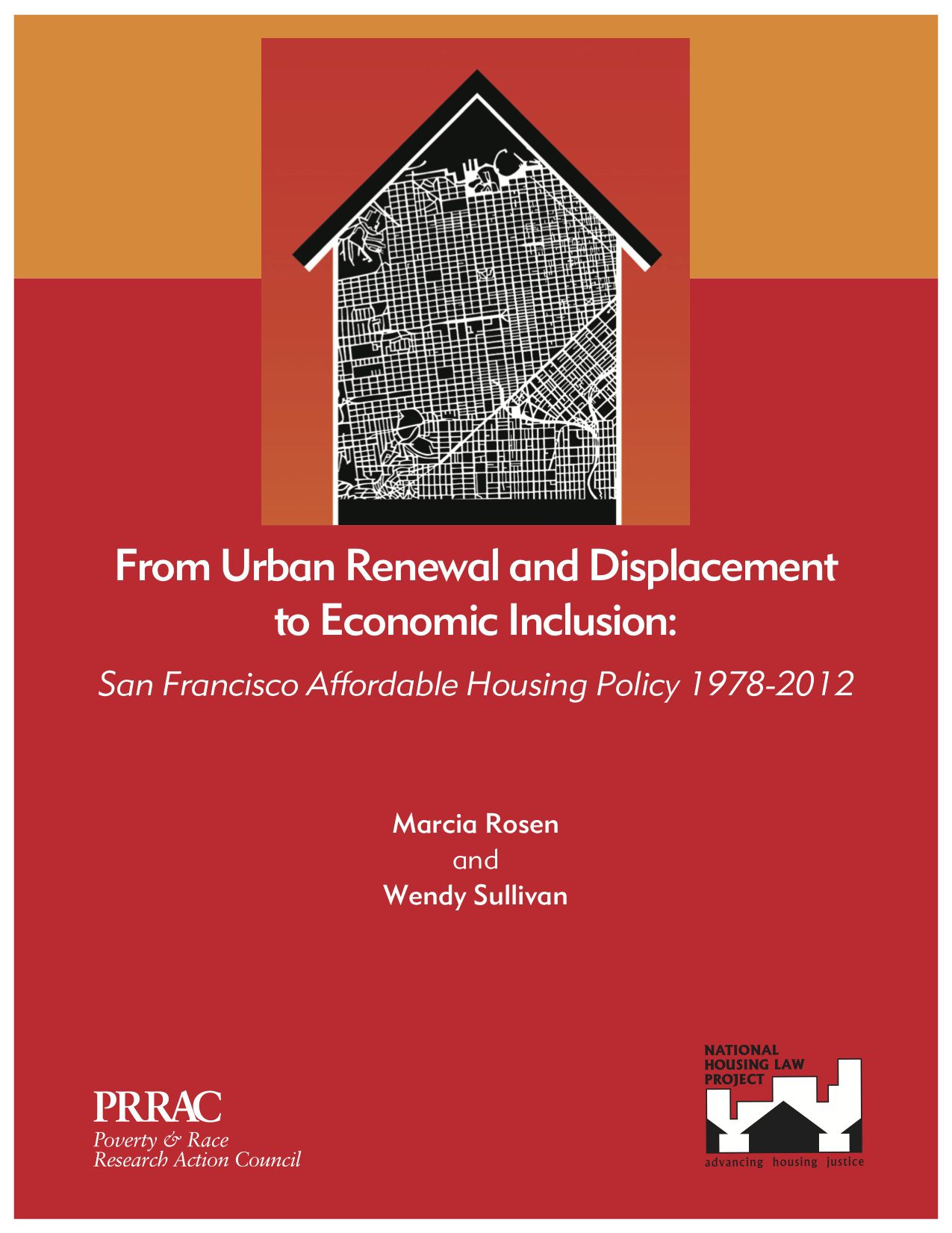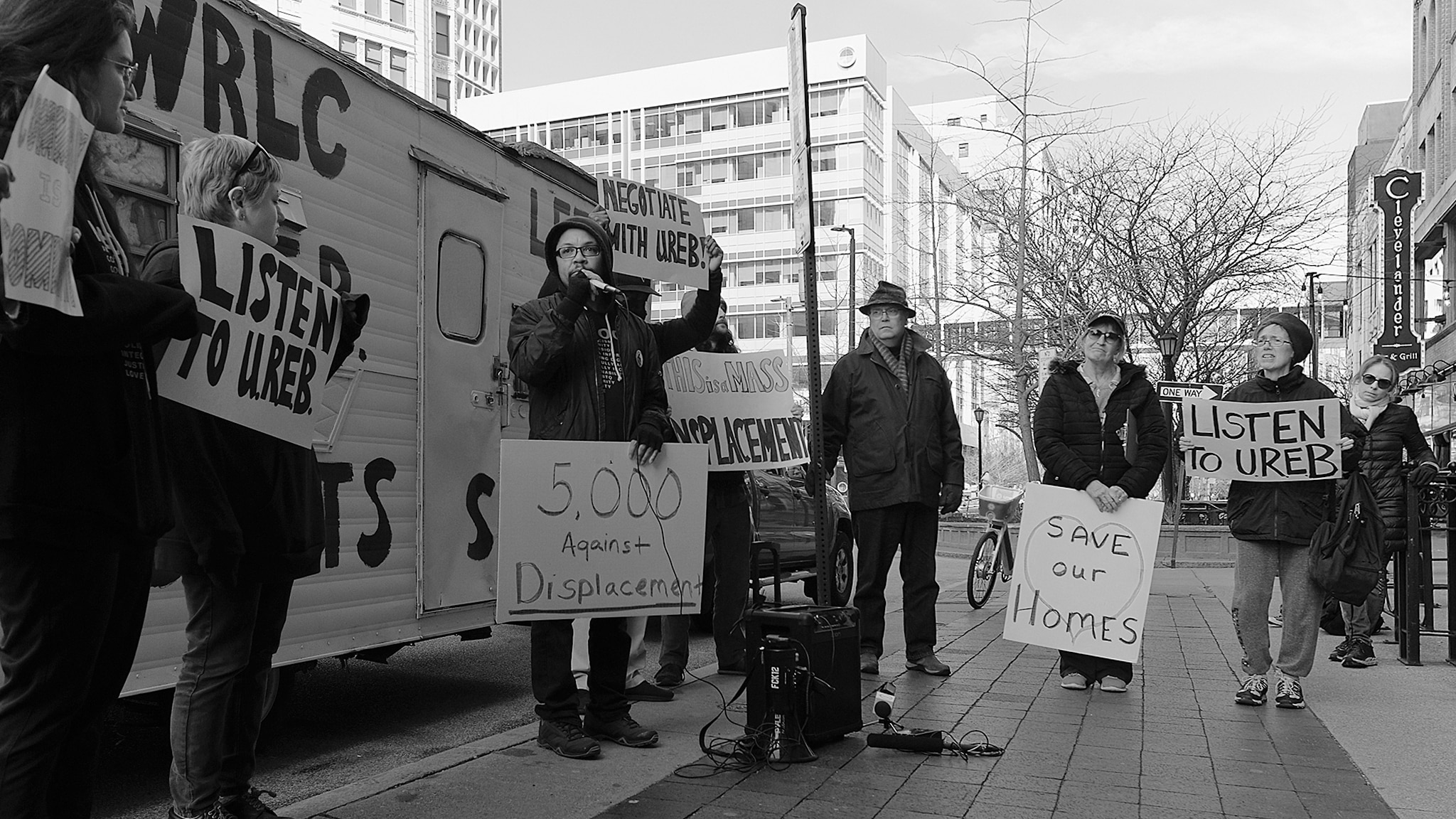From Urban Renewal and Displacement to Economic Inclusion: San Francisco Affordable Housing Policy 1978-2012, by Marcia Rosen and Wendy Sullivan. National Housing Law Project and Poverty and Race Research Action Council. 2012, 62 pp.
“History is important. If you don’t know history it’s as if you were born yesterday. And if you were born yesterday anybody up there in a position of power can tell you anything, and you have no way of checking up on it.” Howard Zinn
Marcia Rosen and Wendy Sullivan from the National Housing Law Project have given us a history to learn from. From Urban Renewal and Displacement to Economic Inclusion: San Francisco Affordable Housing Policy 1978-2012 is a unique and comprehensive analysis into the history of affordable housing policy in San Francisco. It is also the story of the maturation of the community of that city’s housing groups from a grassroots, single-issue movement into a major force in shaping affordable housing policy there. The study teaches us that sustained community organizing has the ability to change the face of city government from one controlled by business interests into one responsive to neighborhoods and residents. It is particularly relevant now, since San Francisco is in the middle of its second technology boom. Salesforce, Google, Twitter, and many smaller technology companies have added thousands of jobs, resulting in additional stress on housing costs, with rents increasing rapidly and now averaging more than $1,800 per month for a one-bedroom apartment.
One section of the study traces the history of San Francisco housing policy starting in the urban renewal movement of the 1970s and ending in the present day, when the mayor is a former housing activist and the city has just created a new permanent source of funding for affordable housing and is committed to a bold initiative to rebuild public housing in an initiative called HOPE SF.
The study tells the story of a number of epic and historic battles over housing issues in San Francisco: major evictions, urban renewal, and gentrification. What makes San Francisco different from much of the rest of the country is that the battles resulted in significant local financing for affordable housing, high capacity nonprofit developers, strong inclusionary housing regulation, and rent control. Rosen and Sullivan’s study provides the roadmap can make San Francisco a significant model for other cities.
The study also provides a comprehensive look at the financing of affordable housing in San Francisco, pointing out the myriad of funding sources necessary to create permanent affordable housing for populations ranging from dual-diagnosis special needs supportive housing to family units. San Francisco has used TIF bonds, a local Affordable Housing Fund, Hotel Tax funding, money from the general fund, and many other sources to fill the large gaps between market rate and affordable.
The study includes a timeline that makes a clear connection between organizing and policy changes and many charts to summarize the research and trends.
With all the struggle and victories, and the strong commitment by city government and housing advocates, it is still clear that the housing needs of low- and moderate-income people in San Francisco have not been met adequately, showing the limits of regulation and nonprofit development in the case of a “strong market city” like San Francisco.





Comments